
The Jiuzhaigou reserve in China’s Sichuan Province, a popular tourist destination. Diego Azubel/European Pressphoto Agency
JIUZHAIGOU, CHINA — By noon, the tour buses that ply the length of this U-shaped limestone valley are packed tight. Elbows are up. People are pushing.
“Are you going to walk?” someone hollers.
“Don’t bump!” comes the reply.
It’s a common scene in any major Chinese city, but here in northern Sichuan Province, 10 hours by bus from Chengdu, the crowds are surrounded by karst peaks and turquoise pools, not high-rise buildings and freeways.
Each day, tens of thousands of Chinese tourists board buses to visit the pine forests and mock-ethnic villages of Jiuzhaigou, a Unesco World Heritage Site. Admission costs 320 renminbi, or $47. For 25 renminbi more, visitors can rent a bejeweled, Tibetan-inspired costume and have their pictures taken by a local.
These sightseers, clad in Gore-Tex and Gucci, are fueling a boom in China’s domestic travel sector. Spurred by a mix of middle-class money, government support and interest in rediscovering China, the market is beating predictions and bucking global trends.
While the industry lost ground in Europe and the United States, China’s tourism sector posted a 9 percent jump in revenue 2009, to 1.26 trillion renminbi, thanks to domestic demand.
In 2010, total tourism revenue is expected to rise 14 percent, totaling 1.44 trillion renminbi, according to figures released Jan. 24 in state media reports.
“There is clearly an upward trend, a huge upward trend,” said Nancy Cockerell, a policy adviser at the World Travel and Tourism Council. “For the next 10 years, China will be leading the way.”
Though Chinese people have been on the move for centuries — as explorers, migrants and traders — leisure travel is relatively new to the People’s Republic. The post-Mao era afforded little time for holidays, and for most, money was scarce. The state regulated travel between provinces, so would-be wanderers needed papers and permission, in addition to cash.
As China’s economy began to gain momentum in the 1990s, the travel industry benefited. The number of domestic trips jumped 54 percent from 1996 to 2006, according to figures released by the China National Tourism Administration.
Higher incomes have driven up leisure travel, but the government has helped, too. As average incomes climbed, the state eased travel restrictions and increased the number of mandatory public holidays to 11 to drive demand.
Since 1999, Chinese workers have enjoyed “golden weeks,” a set of mandatory national holidays. There are now two per year, one held in autumn and one in winter.
The purpose is to get people spending — a strategy that seems to be working. During the National Day Golden Week holidays from Oct. 1 to Oct. 8 last year, 19.6 million tourists visited Sichuan Province alone, generating 7.7 billion renminbi in revenue, according to state media.
Nationally, tourism revenue has been climbing for more than a decade, and more people than ever are traveling.
The National Tourism Administration said domestic tourists had made 1.9 billion trips in 2009, an increase of 11 percent over the previous year, and generated 1 trillion renminbi of revenue, up 15 percent from the previous year.
But Ms. Cockerell of the World Travel and Tourism Council said the sector still had room to grow.
“For China, two billion trips is small,” she said. “When they start traveling like Americans, the numbers will be phenomenal.”
The world’s largest travel Web site, Tripadvisor, shares her optimism. In October, it said it had purchased Kuxun.cn, a Chinese flight and hotel search engine, as part of plans to invest $50 million in China through 2011.
Peripheral industries stand to benefit as well. With the rise of mass tourism comes the development of what Tim Winter, editor of “Asia on Tour: Exploring the Rise of Asian Tourism,” calls “travel culture.”
In China, travel culture means big money, he said: “People want the travel uniform; they want the gear.”
For sightseers who want more gear, the shops are ready to help. Visitors to the gift shop near the main cafeteria of the Jiuzhaigou National Park can purchase fox fur stoles (1,400 renminbi), faux fur hats (80 renminbi) or plastic back scratchers (30 renminbi).
Outside the park gates, rows of shops sell high-end travel equipment, including brand-name jackets, digital cameras and the latest in luggage.
Suitably attired, visitors to this once remote region can choose from dozens of hotels, including a Sheraton and an Intercontinental. At night, charter buses ferry guests to Tibetan shows, where, for about $25, they are treated to live music, dancing and food.
Leading the spending spree are China’s young urbanites. Overworked, wealthy and worldly, they have the means to travel and the desire to get away from city life.
“There are skyscrapers everywhere in Shanghai, but here there is natural landscape,” said Allen Zhang, a newlywed touring the park with his wife, Christine Xiong.
“Travel is a completely new lifestyle for us,” he added. “My father’s generation didn’t have the opportunity to travel.”
Mr. Zhang does, so he and Ms. Xiong flew to Sichuan to shoot their wedding pictures at Swan Lake, an algae-green pool famous for its glassy surface.
She stood by the water’s edge in a gauzy, white wedding gown; he beheld his bride through the lens of a tripod-mounted digital SLR.
They plan to travel every season, they said, and explore the country’s far reaches. “China is just a pretty, beautiful place,” Mr. Zhang said.
A version of this article appeared in print on February 2, 2010, in The International Herald Tribune.
Published: February 1, 2010
By EMILY RAUHALA
 The rouble’s been Russia’s currency for the past 500 years. One rouble is divided into 100 kopecks. The word first appeared in the 13th century, thought to have come from the Russian verb “rubit” (“to chop”) as “rouble” used to be half a standard silver bar. When first silver coins were minted in the 15th century, the rouble became the official currency unit. The kopecks (“kopeyka”) got their name from the Russian “kopye” (“spear”) because they featured an image of St. George slaying a dragon with a spear.
The rouble’s been Russia’s currency for the past 500 years. One rouble is divided into 100 kopecks. The word first appeared in the 13th century, thought to have come from the Russian verb “rubit” (“to chop”) as “rouble” used to be half a standard silver bar. When first silver coins were minted in the 15th century, the rouble became the official currency unit. The kopecks (“kopeyka”) got their name from the Russian “kopye” (“spear”) because they featured an image of St. George slaying a dragon with a spear.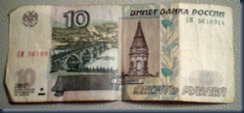
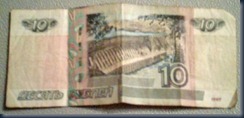
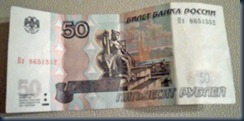
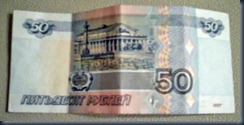
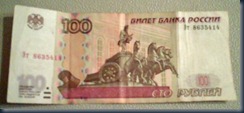
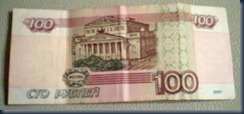
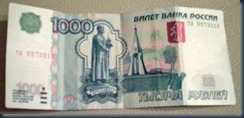
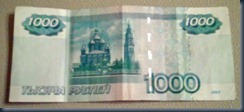
![Cherry blossom viewing in Shinjuku Imperial Garden, Tokyo, Japan.
[Credits : © The Stock Market/Ben Simmons] Cherry blossom viewing in Shinjuku Imperial Garden, Tokyo, Japan.
[Credits : © The Stock Market/Ben Simmons]](http://media-2.web.britannica.com/eb-media/13/20313-003-8E3DC9B0.gif)
![Train of the Sōbu Line passing through Akihabara, a district of Tokyo renowned for its many …
[Credits : © The Stock Market/Ben Simmons] Train of the Sōbu Line passing through Akihabara, a district of Tokyo renowned for its many …
[Credits : © The Stock Market/Ben Simmons]](http://media-2.web.britannica.com/eb-media/04/20304-003-2F808EA7.gif)
![Shibuya shopping district, Tokyo.
[Credits : © Spectrum Colour Library/Heritage-Images] Shibuya shopping district, Tokyo.
[Credits : © Spectrum Colour Library/Heritage-Images]](http://media-2.web.britannica.com/eb-media/98/83798-003-DCC5408A.gif)
![Rainbow Bridge, along the northwestern shore of Tokyo Bay, central Tokyo, Japan.
[Credits : AbleStock.com/Jupiterimages] Rainbow Bridge, along the northwestern shore of Tokyo Bay, central Tokyo, Japan.
[Credits : AbleStock.com/Jupiterimages]](http://media-2.web.britannica.com/eb-media/66/132266-003-4621CCA7.gif)

 Japan is a great place to travel to if you've always wanted to visit Asia but are timid about going to the Far East. It offers all the benefits of a completely modernized society as well as a rich cultural history. Kyoto is a former imperial city with a rich tradition in the arts and a center of Japanese Buddhism. You can stay at the
Japan is a great place to travel to if you've always wanted to visit Asia but are timid about going to the Far East. It offers all the benefits of a completely modernized society as well as a rich cultural history. Kyoto is a former imperial city with a rich tradition in the arts and a center of Japanese Buddhism. You can stay at the  Jan. 29 MIYAJIMA, Japan
Jan. 29 MIYAJIMA, Japan

 2010-1-30
2010-1-30  Sunday, January 31, 2010
Sunday, January 31, 2010 Compiled by Heather Hopkins Clement
Compiled by Heather Hopkins Clement Published: January 30th, 2010 11:49 AM
Published: January 30th, 2010 11:49 AM



